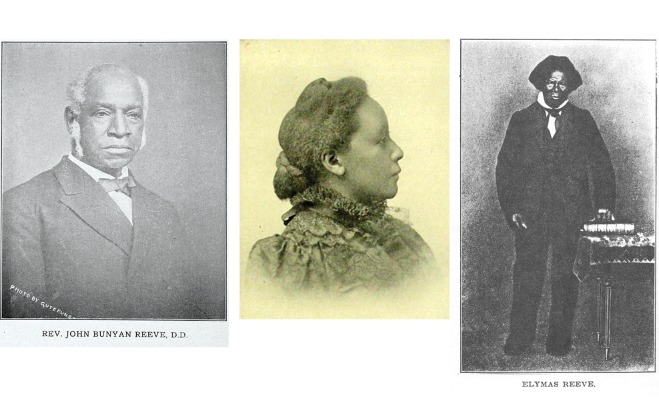History of North Fork slavery largely ignored until recently, historians say

Not long after the founding of Southold Town in the mid-1600s, and more than a century before the western end of the town broke off and became Riverhead, the institution of slavery was part of day-to-day farming life on the North Fork.
Slavery on the North Fork wasn’t nearly as prevalent as in the South in terms of numbers. In 1698 there were 518 slaves in all of Suffolk County, 41 of them in Southold Town. In 1686, there were 27 slaves in Southold, held by 12 owners.
Small numbers notwithstanding, slavery is part of our history and, historians say, something to be addressed during Black History Month in February. The story of the African-American community in Southold and Riverhead is deep, and rich with four centuries’ worth of lessons about hard work, accomplishment, faith and perseverance. But that story begins with slavery — which, contemporary histories have noted, has been largely ignored until recently.
“Slavery, the Great Migration from the South, the work camps that were here, none of that was covered,” said Richard Wines, a Riverhead historian with his own deep local roots. “It’s important to recognize for everyone with roots here that we like to brag about, that slaves are in our past.”
Who were these slaves and their descendants?
“They were the moral leaders of the community, the pastors in their churches. They were Christians. We’ve ignored their story for too long,” Mr. Wines said.
For Southold Town historian Amy Folk, telling the whole story is a way to help people better understand the past.
“I want people to be aware that slavery happened here, too,” she said. “It was a different beast, but still a beast. Families could still be ripped apart.”
The clues to the area’s slave past are scant and scattered. Slaves’ names in the official records are few and far between. For Mr. Wines, history is personal in many ways: His own family roots reach back to the beginning of English settlement in Southold Town — and there are slaves in his deep past. Riverhead Town did not exist until 1792, and its first leaders were also slave owners.
“Polish immigrants arrived here around 1900,” Mr. Wines said. “Within a decade or so they were buying their own farms. They were active politically. They faced discrimination from their so-called English neighbors. But that changed quickly. That did not happen to the people who came north in the Great Migration.”
He said there is a slave family buried in the Aquebogue cemetery. The records show some of the family’s names: Brister and his wife, Zipporah. Brister died in 1839 at the age of 80; Zipporah in 1806 at age 50. The couple had six children. It is not known if their descendants are still living among us.
The couple were the property of Rev. Daniel Young, who for 32 years was minister of the Aquebogue church. Under a New York State law passed in 1799, slavery officially ended on July 4, 1827. If Brister was born in 1759, he was 68 when slavery ended. Born in 1756, Zipporah was likely owned her entire life.
Mr. Wines and his wife, Nancy Gilbert, have delved as deeply as the records allow into slavery in Riverhead, with a goal of telling a more complete story of the town’s past. Their research shows that in 1790, two years before the town was formed, there were 53 slaves in what became Riverhead. In 1800, there were 26; in 1810, 22; and in 1820, 11.
“There are no surviving slave cemeteries or even known slave gravestones in Riverhead,” the couple has written. “There are no slave homes to be declared town landmarks. Histories of the town almost never mention the subject. Documentary evidence is scarce. We only know a few of their names and almost nothing about their lives under servitude.”
Much more is known about a Cutchogue slave named Elymas Reeve. There is even a faded photograph of him — and another of his son, John Bunyon Reeve.
Elymas Reeve was born in 1784, the son of a slave, on the Cutchogue farm of James Wickham Reeve. Last summer, 16-year-old Boy Scout Joe DePinto discovered a headstone at the Old Cutchogue Burying Ground marking the grave of Miriam Reeve, daughter of Elymas and his wife, Hagar. Miriam died in 1822 at the age of 8. The headstone also marked the grave of Parthenia Silone, who died in 1854 at the age of 1 and was related to Elymas and Hagar Reeve.
A story compiled by Jerry Matovcik, a reference librarian at Mattituck-Laurel Library, shows that Elymas and Hagar Reeve had a granddaughter, Josephine Silone Yates, who died in 1912. A photograph of her has also survived.
Ms. Yates became a professor of chemistry, elocution and English literature at Lincoln University, a historically black college in Chester County, Pa. According to Mr. Matovcik’s article, Elymas and Hagar Reeve’s son, John Bunyon Reeve, was born in Mattituck in 1831 and died in 1916.
He went on to college and, in 1858, to Union Theological Seminary in New York City. He would become pastor of the Lombard Street Central Presbyterian Church in Philadelphia.
The son of a slave had gone very far.
Photo caption: John Bunyon Reeve (1831-1916); Josephine Silone Yates (1852-1912); and Elymas Reeve (Courtesy photos)









